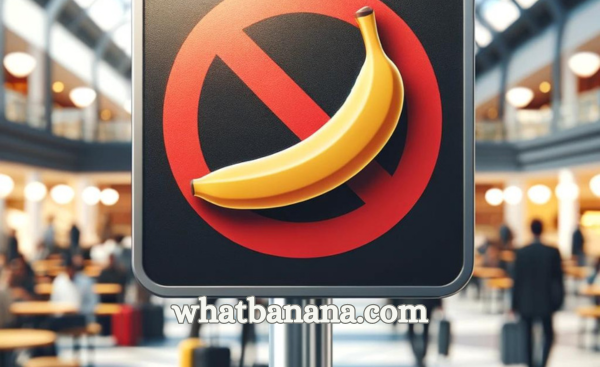- Understanding Banana Allergies: Recognizing the signs of a banana allergy is crucial.
- Avoiding Exposure: Careful label reading is essential for avoiding bananas, similar to how someone with a peanut allergy might scrutinize ingredients.
- Immediate Response to Allergic Reactions: Having an epinephrine auto-injector on hand can be life-saving, akin to how a fire extinguisher needs to be accessible in case of an emergency.
- Long-Term Management and Education: Regular consultations with allergists and educating those around you about allergies can manage conditions effectively.
- Community and Emergency Preparedness: Creating an allergy action plan is essential, similar to having a disaster preparedness plan in place.
Banana allergies, though less prevalent than other food allergies like those to nuts or shellfish, can lead to serious health complications if not properly managed. Recognizing the symptoms and understanding the triggers are the first steps toward effective treatment and management.
Allergic reactions to bananas can range from mild discomfort, such as itching and hives, to severe and potentially life-threatening conditions like anaphylaxis. Given the common presence of bananas in various food products, individuals with this allergy must stay vigilant about their diet and surroundings.
This post aims to provide a comprehensive guide on the causes of banana allergies, strategies for avoidance, treatment options available, and tips for emergency preparedness. With the right knowledge and tools, individuals who are allergic to bananas can navigate their condition safely and confidently, minimizing the risk of allergic reactions and maximizing their quality of life.
Understanding Banana Allergies

What is a Banana Allergy?
A banana allergy is an immune system response to proteins found in bananas, causing the body to mistakenly identify them as harmful. This misidentification triggers a range of allergic reactions, from mild to potentially life-threatening.
Symptoms often include itching or swelling around the mouth, hives, eczema, abdominal pain, vomiting, and in severe cases, anaphylaxis, which requires immediate medical attention. Banana allergies are more common in individuals who have allergies to other substances, such as latex, with which bananas share similar allergenic proteins.
This phenomenon, known as cross-reactivity, can also link banana allergies to sensitivities with other fruits like avocados and kiwi. Understanding this allergy is crucial for managing symptoms effectively and avoiding exposure to allergens, thus ensuring the safety and well-being of those affected.
Causes of Banana Allergies
The exact causes of banana allergies, like many food allergies, involve a complex interplay of genetic and environmental factors. Individuals with a family history of allergies are more likely to develop food allergies, suggesting a strong genetic component.
Exposure to bananas at an early age, the health of the digestive system, and overall immune function can also influence the development of an allergy. Another significant factor in banana allergies is a condition known as cross-reactivity.
This occurs when the immune system recognizes similar proteins found in different substances. For bananas, the main protein, called chitinase, is also present in natural rubber latex.
🍌 What is a Banana Allergy? 🍌 |
|
|---|---|
| Definition | An immune system response to proteins in bananas, causing the body to react as if they are harmful. |
| Symptoms | Itching, hives, swelling, gastrointestinal distress, and in severe cases, anaphylaxis. |
| Common Triggers | Consumption of bananas, banana-flavored products, or cross-contamination with banana proteins. |
| Management | Avoidance of bananas, use of antihistamines, and carrying epinephrine auto-injectors for emergencies. |
| Brought to You by whatbanana.com | |
Therefore, individuals allergic to latex may develop a banana allergy due to their immune system mistaking similar proteins. This is known as latex-fruit syndrome and can extend to reactions with other fruits such as avocados, chestnuts, and kiwis.
Understanding these causes is vital for managing banana allergies effectively. Awareness of potential cross-reactive foods and conditions can help individuals and healthcare providers better anticipate and mitigate allergic reactions, ensuring a safer dietary regimen and overall lifestyle.
Avoiding Bananas and Related Products
Avoiding bananas and products containing banana derivatives is crucial for managing a banana allergy. This can be challenging, as bananas are a popular ingredient in many foods, including baked goods, breakfast cereals, smoothies, and even some health and beauty products.
It is essential for those with a banana allergy to become vigilant label readers. Manufacturers often list bananas under various names, including musa sapientum, banana puree, banana leaf extract, and others.
Learning these terms is vital to ensure no accidental ingestion occurs. Additionally, cross-contamination can be a concern, especially in restaurants or facilities that do not specifically cater to food allergies.
Communicating your allergy clearly to servers or food handlers can help prevent unintentional exposure. For individuals with severe allergies, even indirect contact with banana particles can trigger a reaction.
Thus, avoiding places like fruit markets where banana exposure is high may be necessary. Furthermore, households may need to consider keeping bananas out of the home entirely to ensure a safe environment.
By understanding and implementing strict avoidance strategies, individuals with banana allergies can significantly reduce the risk of allergic reactions, thereby maintaining better health and quality of life. For more detailed information on dealing with plants and parts of the banana not typically considered, see how planting banana rhizomes can provide insights into other uses of the plant.
Medications for Managing Symptoms
Managing the symptoms of a banana allergy often involves the use of medications, primarily antihistamines and epinephrine, which are critical for addressing allergic reactions. Antihistamines are commonly used for mild to moderate symptoms such as itching, swelling, and hives.
These medications work by blocking histamine, a substance released by the immune system during an allergic reaction, thus reducing discomfort and preventing symptoms from worsening. For severe reactions, such as anaphylaxis, epinephrine is the first line of treatment.
Anaphylaxis can be life-threatening, presenting symptoms like difficulty breathing, a sudden drop in blood pressure, and loss of consciousness. Epinephrine auto-injectors, such as EpiPens, are designed for immediate self-administration.
Carrying an auto-injector at all times and knowing how to use it correctly is imperative for individuals with severe allergies. It is also important to educate family members, friends, and colleagues about the correct use of these medications in case of an emergency.
Training on how to administer epinephrine and recognizing the signs of anaphylaxis can save lives. Moreover, always ensure that these medications are within their expiration date and easily accessible in times of need.
Learn how to make paper from banana peel, showcasing the versatile uses of this common fruit beyond consumption.
Long-Term Management
Long-term management of a banana allergy requires ongoing vigilance and adaptation to ensure safety and maintain quality of life. Regular consultations with an allergist are essential.
An allergist can provide specialized care, monitor the allergy’s progression, and update treatment plans as necessary. This may include adjusting medication dosages or exploring new therapies as they become available.
Education plays a crucial role in long-term management. Individuals with a banana allergy, along with their families, should be educated about recognizing early signs of an allergic reaction and the proper steps to take in response.
Allergy education programs and support groups can offer valuable resources and community support that enhance coping strategies. Nutritional counseling is also beneficial, as it helps individuals find alternative sources of nutrients typically obtained from bananas, such as potassium and vitamin B6.
A dietitian can suggest other foods that provide similar nutritional benefits without the risk of an allergic reaction. For some, the possibility of outgrowing the allergy exists, especially in children.
Regular allergy testing can help determine if the allergy is still present or if tolerance has been developed, potentially leading to a reassessment of dietary restrictions.
Emergency Preparedness

Steps to Take During an Allergic Reaction
Recognizing and responding swiftly to an allergic reaction to bananas is crucial for preventing severe outcomes. The first step is immediate recognition of symptoms, which may include itching, hives, swelling, abdominal pain, difficulty breathing, or a sudden drop in blood pressure.
Once these symptoms are identified, the following actions should be taken without delay:
- Administer Epinephrine: If symptoms suggest a severe reaction or anaphylaxis, administer an epinephrine auto-injector immediately. Epinephrine is the most effective treatment for severe allergic reactions and can be lifesaving.
- Call Emergency Services: After administering epinephrine, call emergency services right away. Even if symptoms seem to improve, further medical evaluation is necessary as symptoms can recur.
- Stay Calm and Rest: While waiting for medical help, keep calm and remain lying down if possible, unless breathing is impeded, in which case sitting up is preferable.
These steps are essential for effectively managing a banana allergic reaction and ensuring safety.
Creating an Allergy Action Plan
Creating an allergy action plan is a proactive step to ensure safety in the event of an allergic reaction. This plan should include detailed instructions on how to recognize and respond to symptoms of a banana allergy.
It should clearly list:
- Symptoms: Differentiate between mild and severe symptoms.
- Actions: Specify what to do for different levels of symptoms, including when and how to administer medications like antihistamines and epinephrine.
- Emergency Contacts: Include contact information for emergency services, family members, and the individual’s allergist.
Distribute copies to family, friends, schools, and workplaces to ensure everyone is informed and prepared.
My Final Thoughts
Effectively managing a banana allergy is crucial for maintaining safety and enhancing the quality of life for those affected. By understanding the nature of the allergy, implementing strict avoidance strategies, and being prepared to act quickly in the event of an allergic reaction, individuals can significantly reduce the risk of adverse effects.
It is essential to engage with healthcare providers who specialize in allergies to obtain tailored advice and treatment plans that reflect the latest in allergy care. Education is a cornerstone of allergy management—not only for the individual but also for their community.
Schools, workplaces, and social groups should be informed about the potential severity of food allergies and the appropriate responses to allergic reactions. This knowledge can foster a supportive environment that enhances safety for everyone.
Moreover, staying informed about advances in allergy treatments and potential cures is important. The landscape of food allergy research is dynamic, and new therapies and recommendations can emerge, offering hope and improved management options for those with banana allergies and other food sensitivities.
In conclusion, while a banana allergy can pose significant challenges, with the right strategies and support, individuals can lead active, healthy lives free from the fear of allergic reactions. How do you think community awareness and education about food allergies could be improved to better support individuals with conditions like banana allergies?
Let me know in the comments below!
FAQs

What are the common symptoms of a banana allergy?
Symptoms can range from mild, such as itching around the mouth and hives, to severe, such as difficulty breathing and anaphylaxis.
Can banana allergy be outgrown?
Like many food allergies, some children may outgrow a banana allergy. Regular allergy testing can help determine if the allergy is still present.
Are there any cross-reactions with other fruits or allergens?
Yes, individuals with a banana allergy may also react to latex and other fruits such as avocados, kiwis, and chestnuts due to similar proteins.
What are some alternative fruits that are safe for individuals with a banana allergy?
Fruits like apples, berries, and citrus are generally safe alternatives for those with a banana allergy. However, it’s important to consult with an allergist for specific dietary advice.
- Bananas: The Secret Weapon for a Healthier Heart
- Banana Safety 101: Which Varieties Are Edible?
- Are You Allergic to Bananas?
- Timing the Perfect Red Banana Ripeness! (Solved!)
- Ever Wondered Why Your Banana Tastes Spicy? Here’s the Answer!
- Is it Safe to Eat Bananas That Have Split Open? (3 Banana-Splitting Facts)






